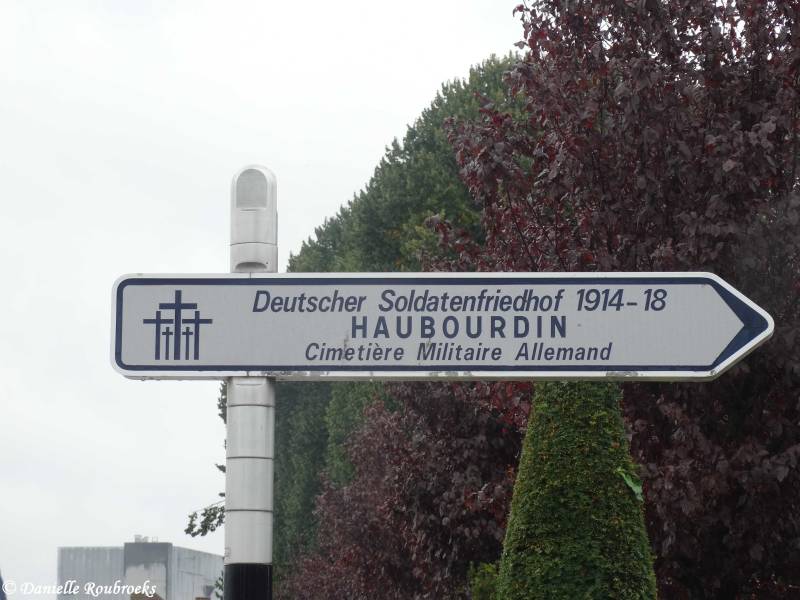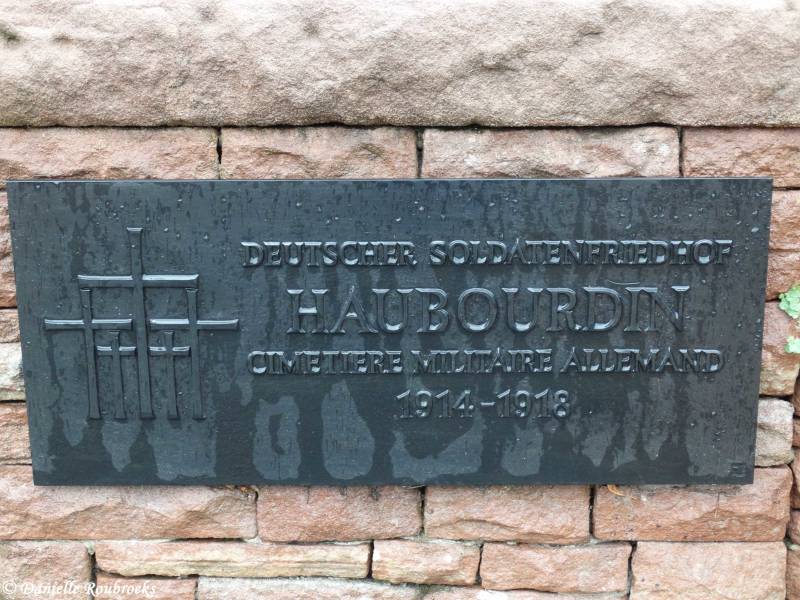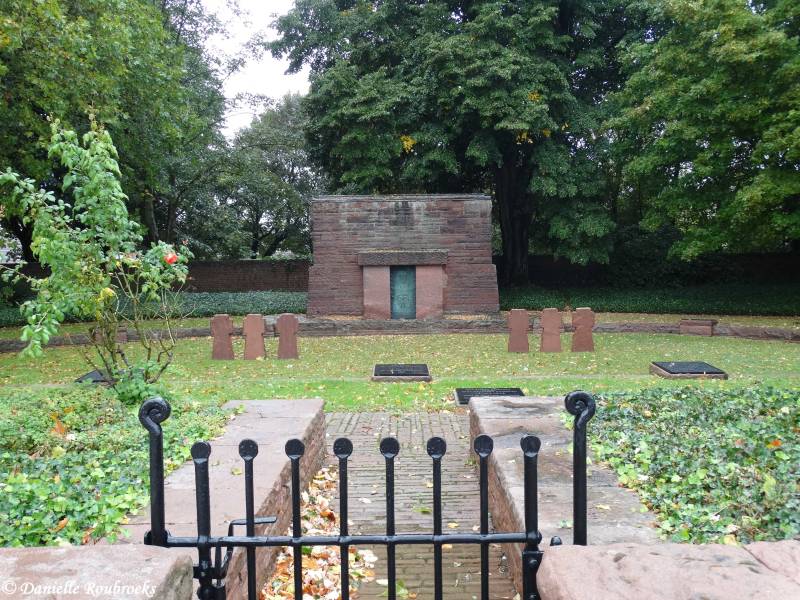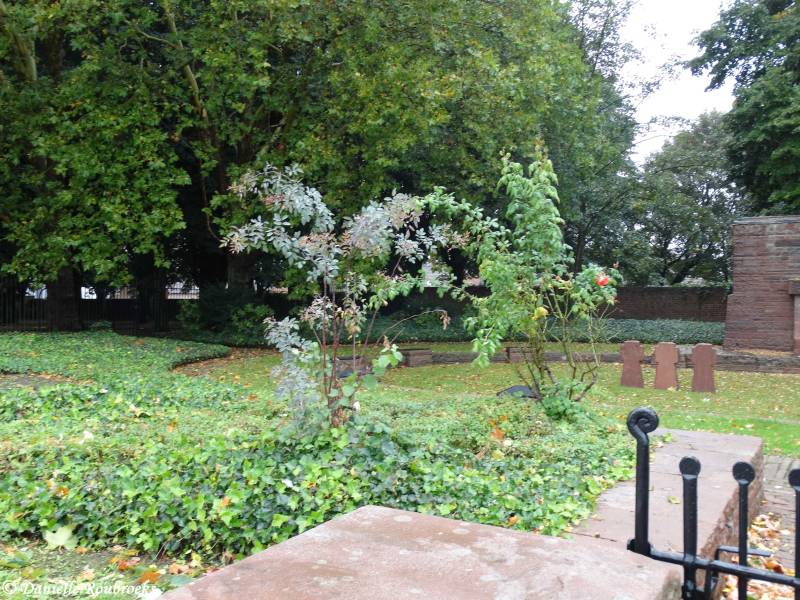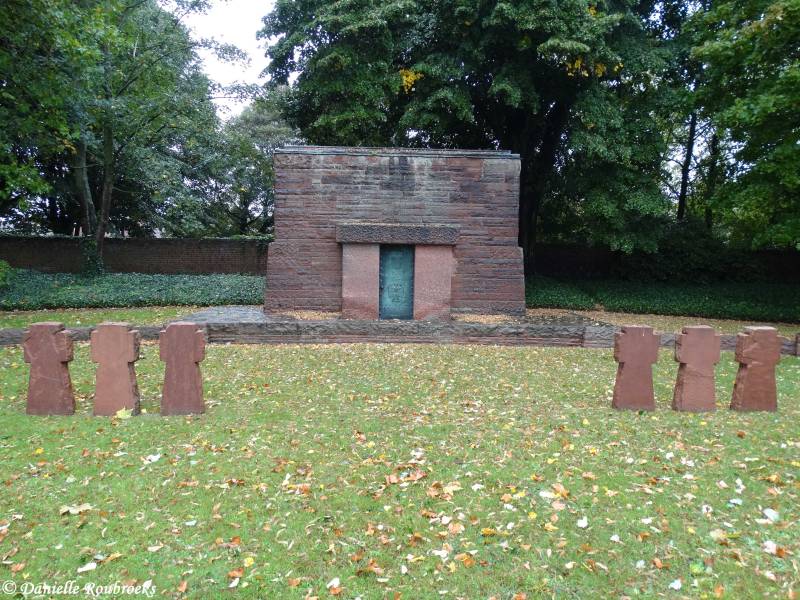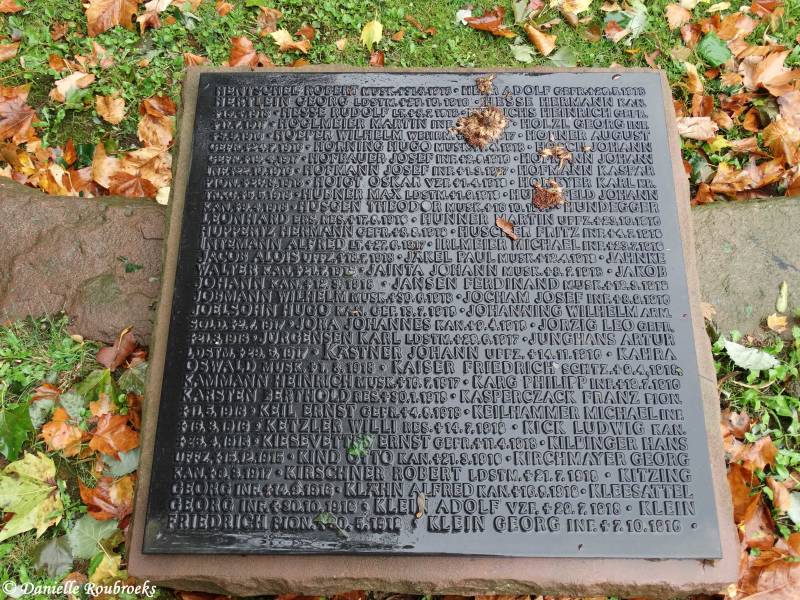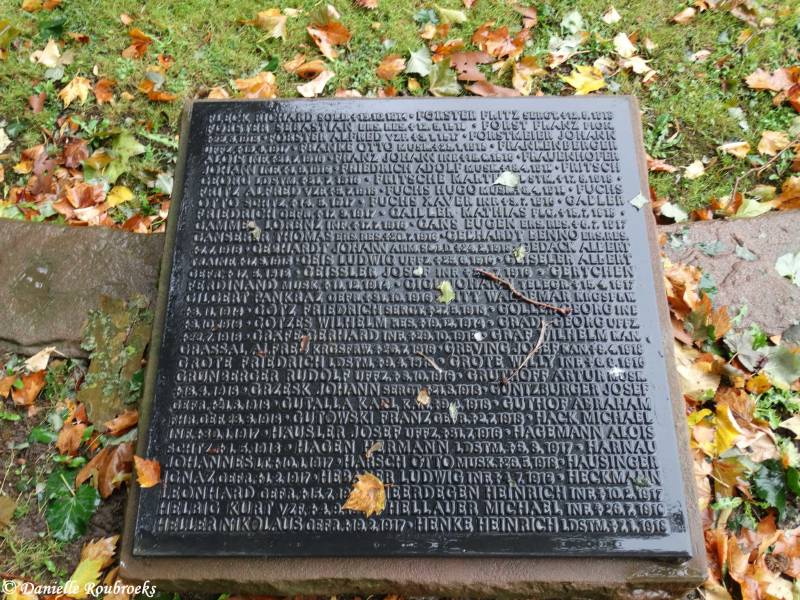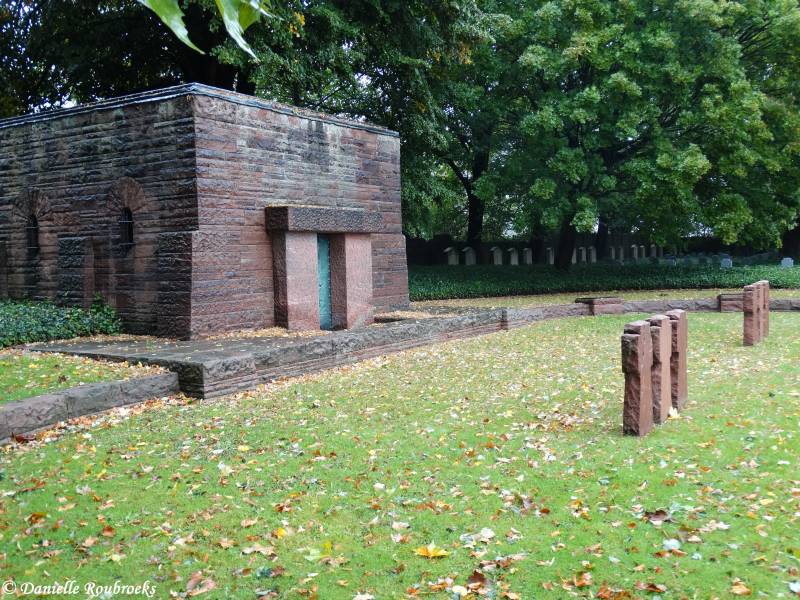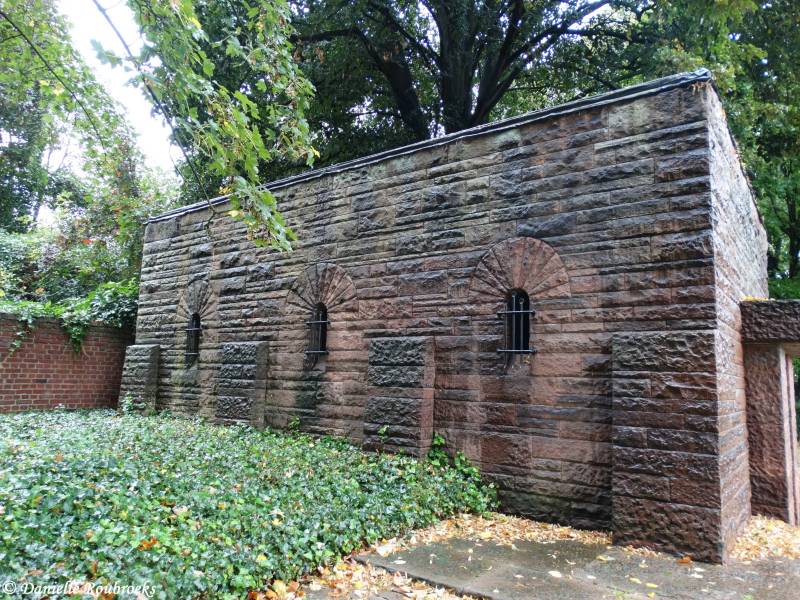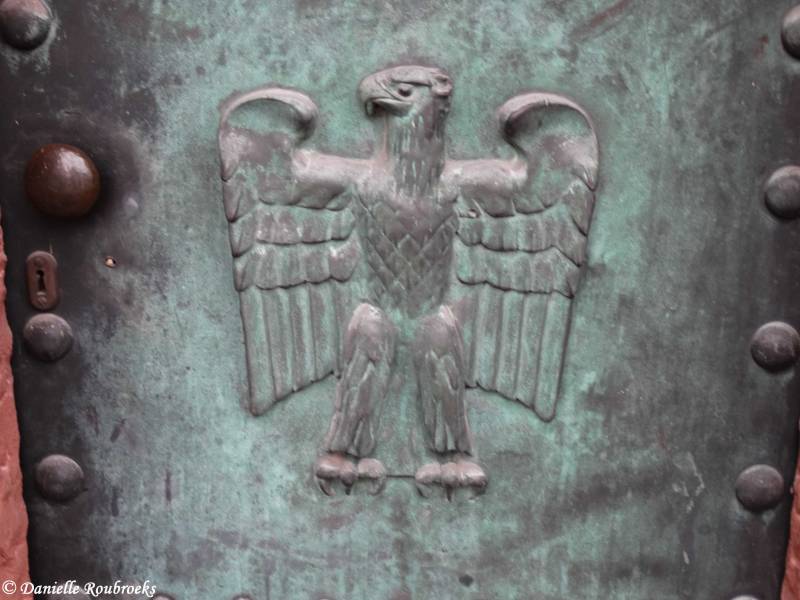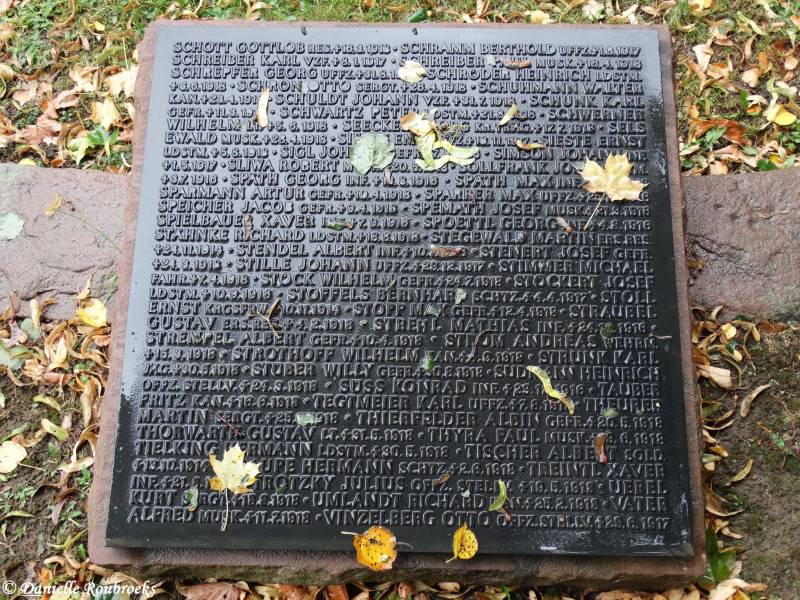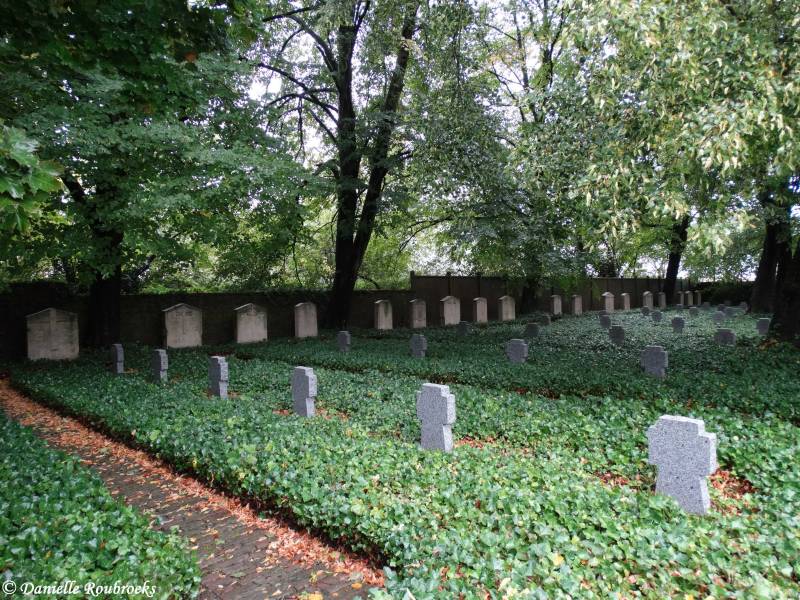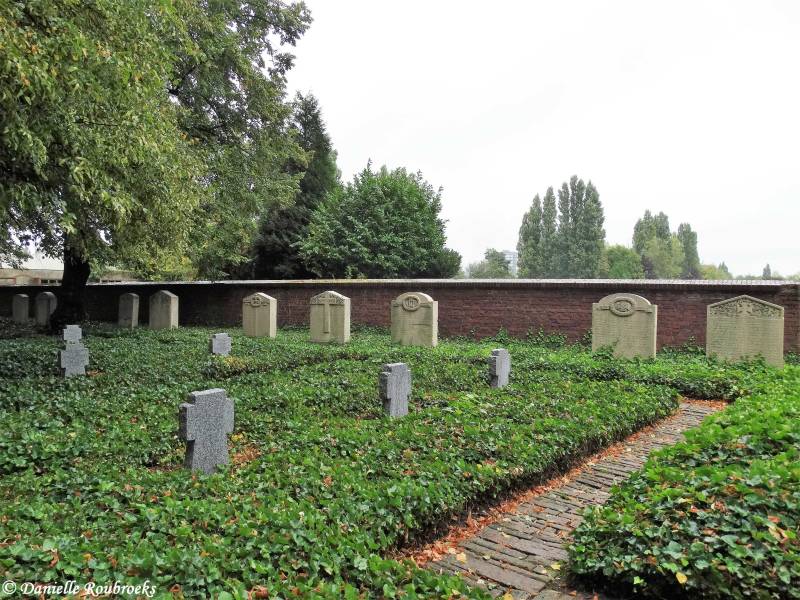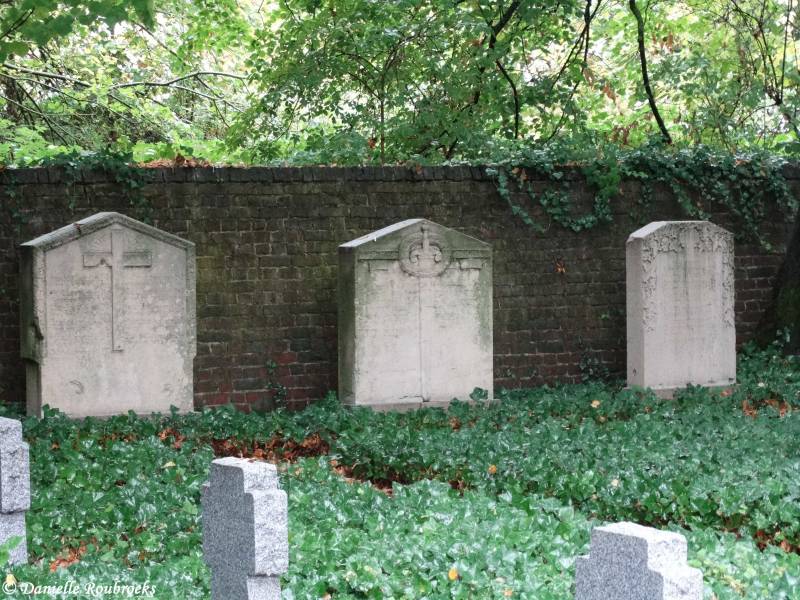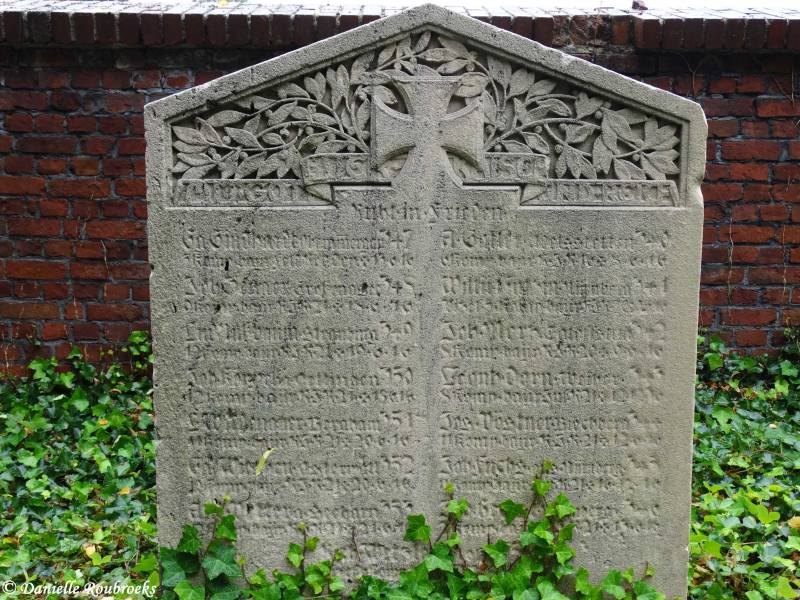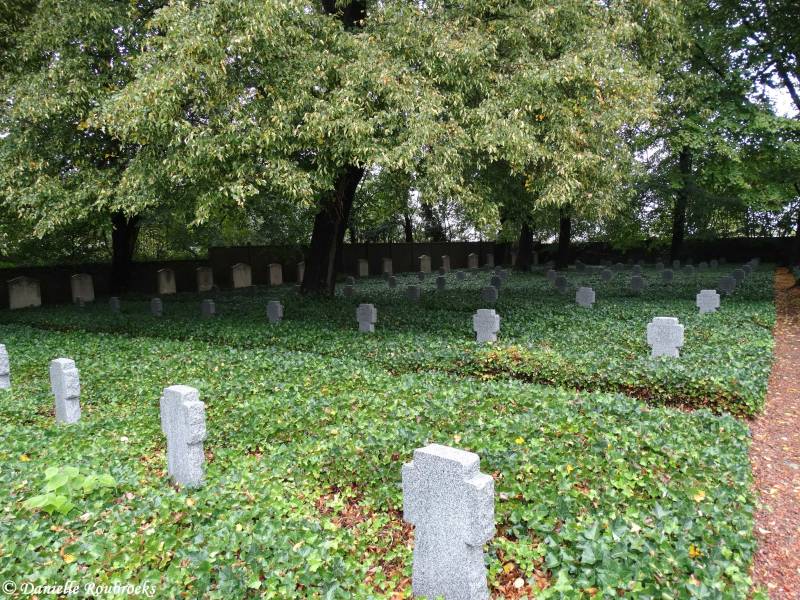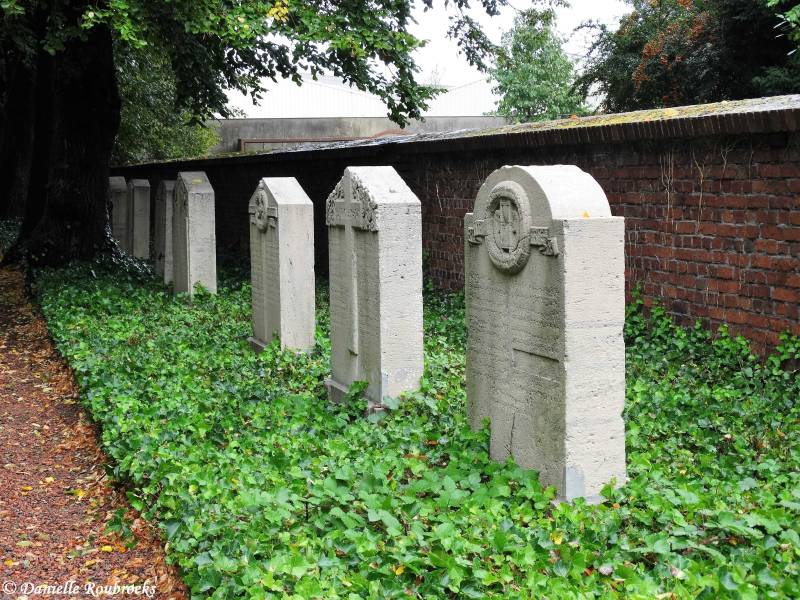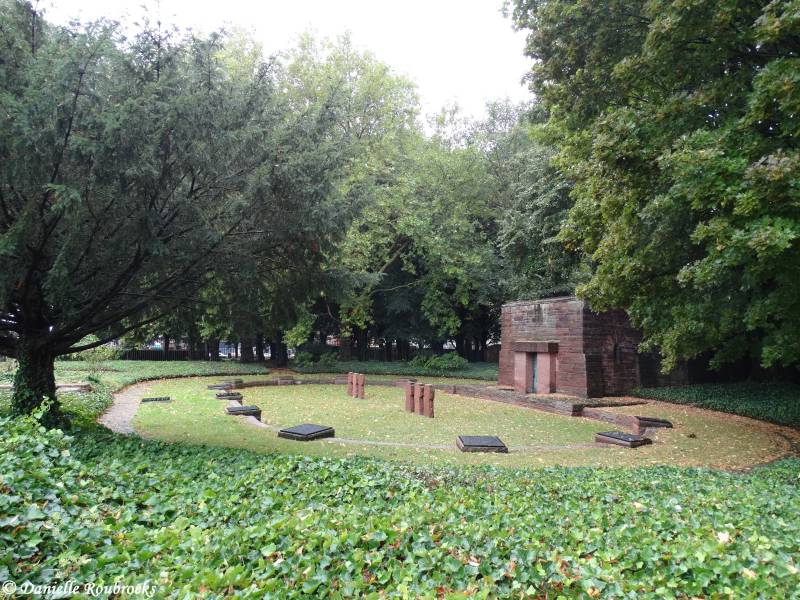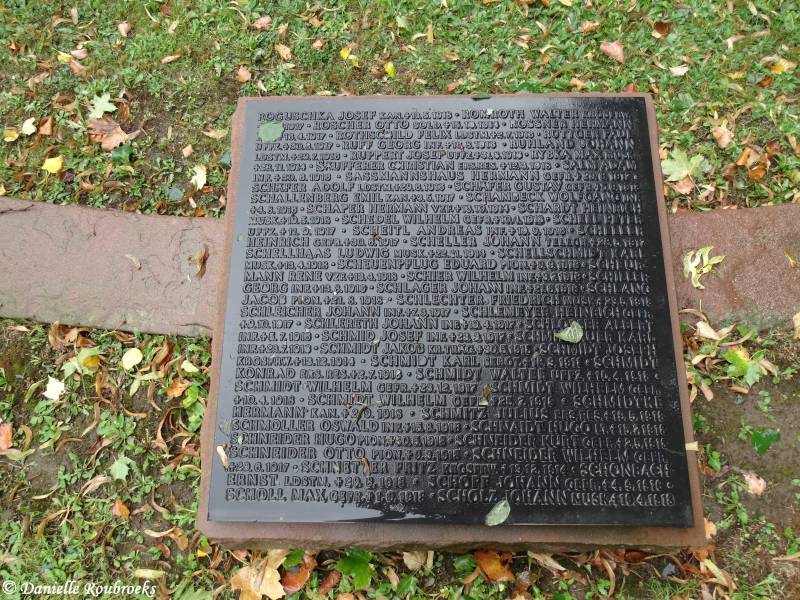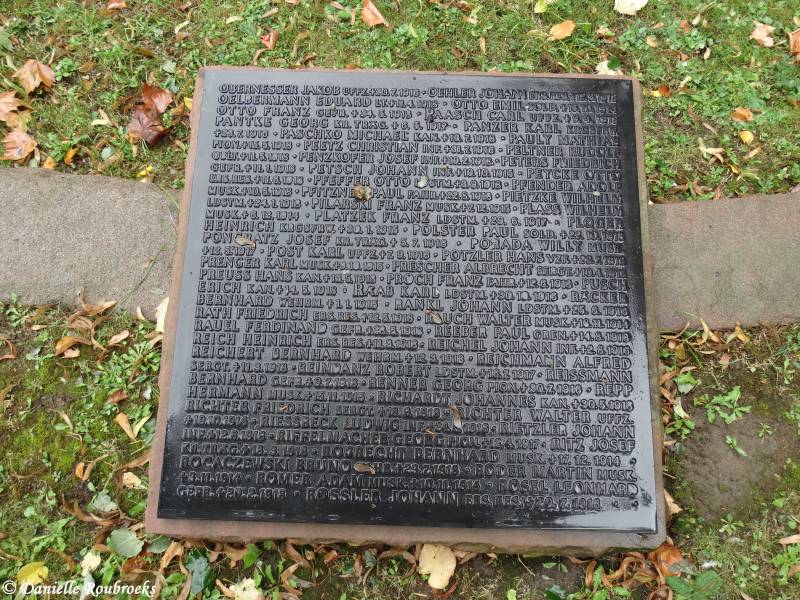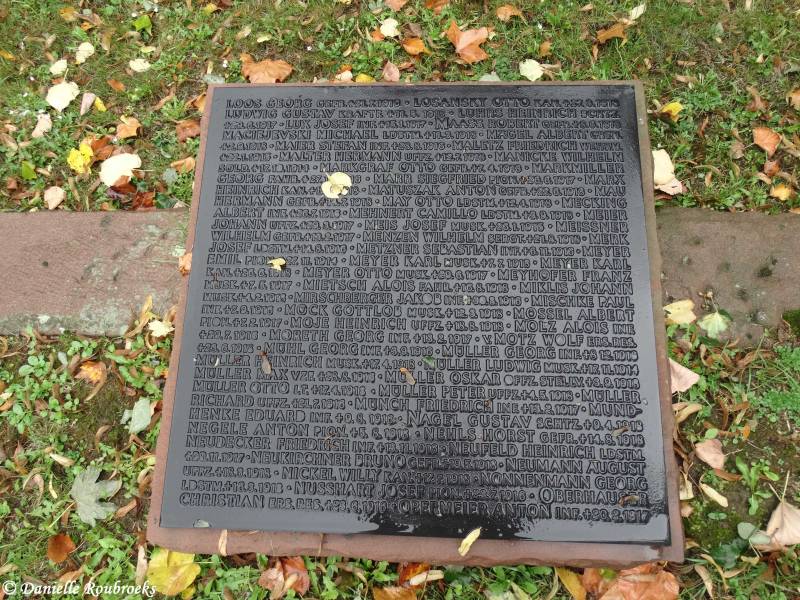Haubourdin Kriegsgräberstätte - German War Cemetery
Historical Information (Source: Wikipedia)
The region was held by the Germans from October, 1914, to October, 1918, and the Communal Cemetery, in the South-East part of the town, was used and extended by German Field Hospitals. The Germen Extension, with nearly 1,000 graves, is permanent; 44 British graves have been removed from it to Cabaret-Rouge British Cemetery, Souchez, and eleven (all of 1914) from the Communal Cemetery itself to Laventie Military Cemetery.
There are 1.000 German Servicemen commemorated here, 627 of these in a mass grave. Haubourdin military cemetery was created in 1915 by German troops. It is as well soldiers who have died in military hospitals or on the battlefield.
The cemetery is divided into two distinct parts. Upon entry, the grave is surrounded by metal plates with the names of the soldiers who are buried; behind the moat, the Memorial Hall in red sandstone from the Vosges built in 1933 but is not accessible; inside, a mosaic, designed by the artist Fritz ERLER (1868-1940) of Munich, a funeral procession.


